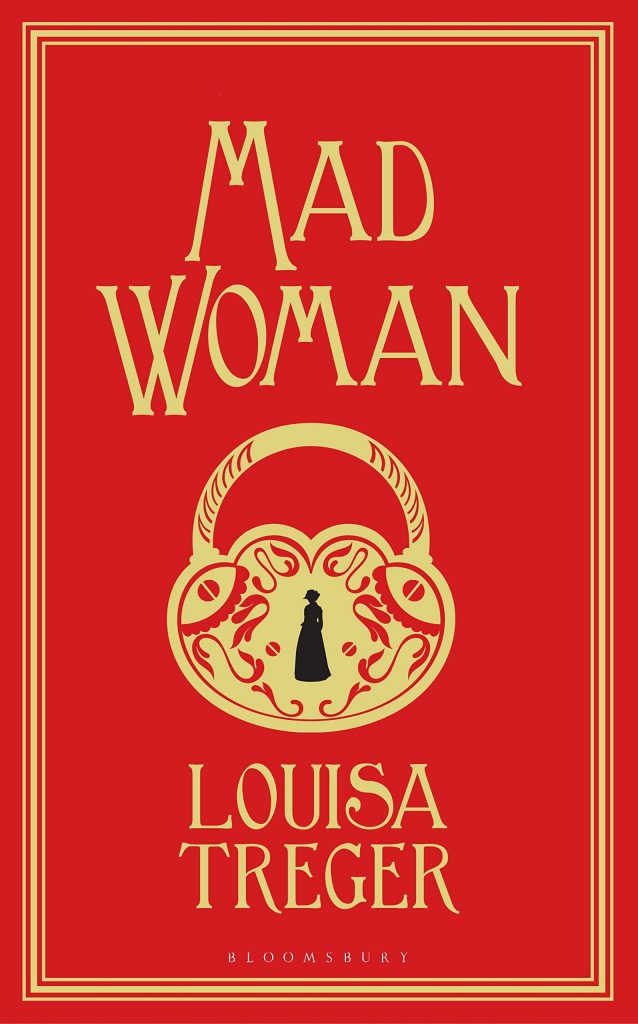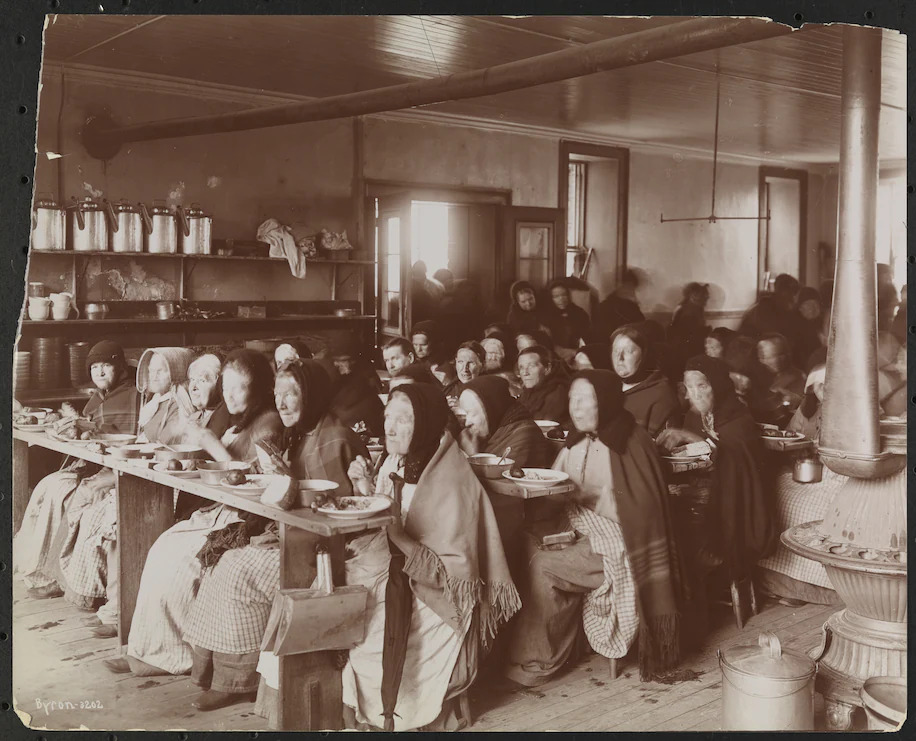Brave: Louisa Treger’s biography of Nellie Bly (inset) relates how she gets into Blackwell’s Island Asylum (pictured) to expose the mistreatment of patients.
Welcome to New York City’s Blackwell’s Island asylum that houses ‘mad women’ who drink too much, act out on daytime hallucinations, and hit their cellmates across the head with pots. It’s 1887 and terrible things happen here: Rats run across the wards in broad daylight while nurses beat and starve patients.
The only reason the world today knows about what goes on inside this asylum is thanks to the work of Nellie Bly, Mad Woman’s protagonist who pretends to be clinically insane in order to get into wards of Blackwell and expose the mistreatment of female patients.
 Mad Woman Front Cover
Mad Woman Front CoverMad Woman tells the true story of a 19th century female investigative journalist, Nellie Bly – the first of her kind – who exemplifies bravery, skill and innovation that is required to become a journalist and what we would call a feminist today. It’s hard enough to be a writer, but during Bly’s time it was infinitely more difficult as a woman.
Feminist in the making
If your favourite genre of literature is female rage, then this is the book for you. Bly channels her rage positively through her storytelling. Mad Woman is meandering and personal, and the biographical details of Bly’s life are similar to what many women are [unfortunately] all too familiar with.
Growing up in a home with two older brothers who are granted more freedom than her, Bly is restless for a life beyond what a girl is “supposed” to do. Her parents, too, reinforce these [binaried] societal narratives and conventions: Women are expected to be quiet, submissive, diplomatic, let things go, not get angry and conditioned to be subservient. However, Bly’s father gives her a glimmer of hope beyond this when he gives her a book and pen that shows that when you give a child a pencil, you give her an entire world.
Mad Woman even delves into the psychology of abusive relationships through Bly’s vantage point of facing abuse from her mother, and her abusive alcoholic stepfather. The pattern of guilt that easily manipulates a person, paired with the pressure to uphold society’s [binaried] gender roles, are enough to force one into madness. From a young age, Bly develops a complex system of observation, identifying tones, and how men play havoc with a woman’s heart.
It isn’t until Bly and her family are free from the shackles of her mother’s abusive marriage that she taps into her hunger to become a journalist. Women being allowed to choose the direction of their lives is unheard of in the 1800’s, while Bly’s drive to convince New York City’s news world that the stories of working women are worth telling.
Because of the very nature of dreams held by a woman – absurd, non-linear, fantastical – women use them as a springboard to explore ideas free from the constraints of society’s patriarchal conventions and logic. The work of women is considered less serious than that of white men. It often goes undocumented, disappears into private collections, is lost or destroyed.
Nellie Bly understands that history is a story told via words: if women aren’t mentioned in books, news, and journals they may as well have never existed. Given their invisibility, the act of female writing and reporting – a woman declaring that her existence is something worth recording – is one of radical defiance. This is why her journey to write about the women in the asylum on Blackwell’s Island is her calling.
Ten Days in a Mad-House
Bly ironically is considered ‘mad’ to be pretending to be a mad person in order to go into an asylum. She knows however, every good writer has to be an imposter in every room, whether it’s in the newsroom or the wards of Blackwell Island Asylum. It is during this time that Bly conducts her research that informs her news articles and [now famous] book, Ten Days in a Mad-House by speaking to female patients, nurses, and even supposedly having an affair with one of the hospital’s doctors.
The asylum seems to be more a place of punishment than a place of healing and refuge for women. A conversation with a female patient opens her eyes to the realisation that these female patients are not necessarily “insane” in terms of psychiatric standards, but inconvenient to the patriarchal narrative forcing women to be subservient.
After getting close to another patient Bly confirms that “so, the women you’ve been telling me about are branded mad simply for rebelling against our system, which keeps them downtrodden? […] Men make up narratives that put them here”. This time in the asylum is a mix of optimism – the sense that her plan is working and the opportunity to write something big – and a place of terrible tragedy: the dispossession of women deemed “mad” or inconvenient.
Mad with anxiety and fear, Bly’s experience as a child – like most women who experience trauma – leaves her lost, hallucinating, considered “mad” then locked in a mental asylum. These women are in the care of sadistic doctors, they are drugged, stripped naked, strapped to a bed, all because they are living in the shadows of the most awful things that have ever happened to them (that are for the most part, dismissed or normalised).
Mad Woman is a form of catharsis for Bly if not to heal herself, at least to help alleviate some of the physical, emotional, or psychological agony she experienced throughout her life. Based on her observations of her mother’s homelife and asylum patients, “what kills [Bly] is that she wasn’t mad – only desperate”.
Bly comes to realise that these women may not all be dangerous to themselves and those around them despite being deemed mad, based on this she poses “what is sanity except being able to contain madness inside yourself?” as women are conditioned to do. For these women, it would seem that every extreme feeling they have erupts in physical collapse… deeming them mad.
Modern day muse
Nellie Bly is author Louisa Treger’s muse. The Muses, of course, are the nine Greek goddesses who personify literature, music, art and science. Treger’s research took to the New York City Public Library, Washington DC’s Library of Congress, and of course right to Blackwell Island, where Bly spent her days “undercover”.
 Blackwell Women 1890’s: Blackwell’s Island in the mid-1890s where women were not treated to be cured.
Blackwell Women 1890’s: Blackwell’s Island in the mid-1890s where women were not treated to be cured.
When Treger set foot on Blackwell Island – which is now gentrified – she could feel the sad and eerie atmosphere that Bly and other patients felt on the island. It is this research that fuels Treger’s sombre technical brilliance and her skillful evocation of atmosphere felt within the walls of an asylum. As a woman, that is the subject you know best where joy and apprehension mingle in equal measure.
Mad Woman is the kind of book you would wish was prescribed reading in school. Its historical foundation puts it up there with those challenging classics high school students read, while holding very contemporary themes and lessons. Bly’s self-worth exists beyond the male gaze and society’s expectations for women. It’s a complex dynamic that can lead to a reckoning in the mind of female readers.
Mad Woman by Louisa Treger is published by Bloomsbury available for R325.